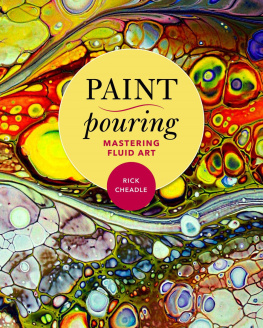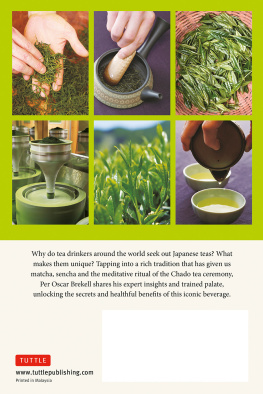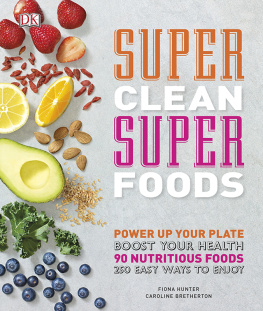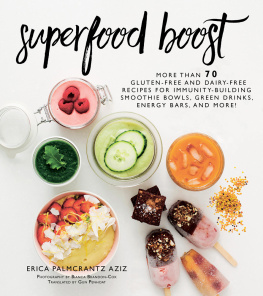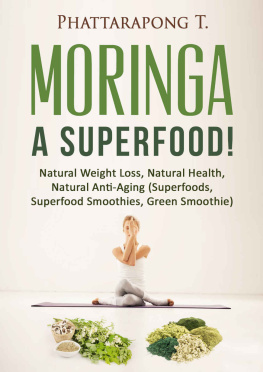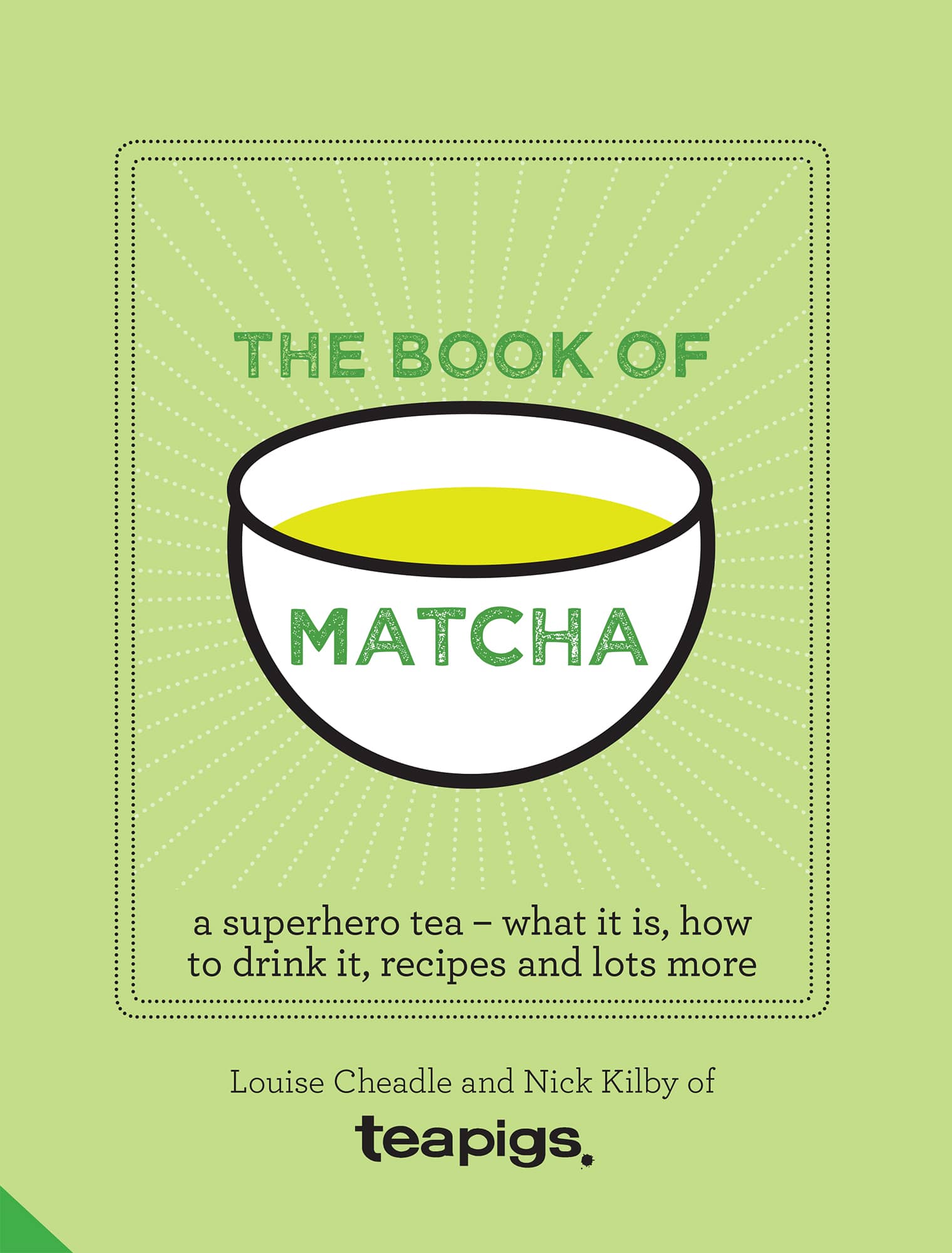THE BOOK OF
MATCHA
A superhero tea what it is, how
to drink it, recipes and lots more
Louise Cheadle and Nick Kilby of
teapigs.

INTRODUCTION
Welcome to our book all about matcha. We are Louise Cheadle and Nick Kilby, the founders of teapigs, and we are big fans of this superhero amongst teas.
What is matcha, and why is it so good for you? you may ask. Matcha is a superpower green tea made only from green tea leaves and containing natural green tea flavonoids (catechins). The best matcha comes from Japan and is shade-grown before being ground to a very fine powder.
Drinking matcha is like drinking 10 cups of regular green tea for its nutrient value thats why we call it superpower green tea. We think a daily dose of all-natural matcha will give you buckets of sprightliness!
One of the reasons matcha is so good for you is that the tea bushes are grown under lots of shade, which boosts their chlorophyll content (thats the bright green stuff). The leaves are picked by hand and the stems and veins removed, leaving only the best, juiciest part of the leaves. The leaves are then ground to make a super-fine, vibrant green, nutrient-rich powder.
Another reason matcha is so good for you is the way it is drunk. When you drink regular green tea, you throw away the leaves afterwards, which is a bit like boiling spinach, throwing away the spinach and just drinking the water you will get some of the nutrients, but youre throwing away the best bit. With matcha, you ingest the whole tea leaf so youre consuming every little bit of that lovely green tea good stuff.
Matcha is believed to give you a slow release of energy that lasts throughout the day while keeping you calm, alert and focused at the same time. Thats why Japanese students drink it when theyre cramming for their exams, and its also why Buddhist monks drink matcha to keep them calm and focused during hours of meditation.
Matcha is a very versatile ingredient, as not only can it be drunk as a hot drink, but it can be mixed with juices, milk, cold water or even made into a cocktail or mocktail. As matcha is a powder it can also be used for cooking anything from breakfast granola to stir-fries, cakes and desserts just look at the recipe section from for a wealth of ideas on how to include matcha in your daily diet.
This book is our introduction to matcha. We have included how matcha came about, the importance of it in the Japanese tea ceremony, how it is produced and consumed today, the reasons why people love matcha, and its numerous health benefits. We have also included a huge selection of varied recipes so you can enjoy matcha at any meal including sweet and savoury dishes, snacks and a wide range of drinks.
We introduced matcha to our range of teas in 2008. At that time matcha wasnt readily available in the UK, but we absolutely loved it, and we knew other people would too (once they understood what it was!). Having sourced the very finest bright-green matcha we could find, we put it in a quirky little box with our matcha man design (Mr Nishio). We took the box to Selfridges in London, who were very happy to put it on their shelves.
Matcha was an instant hit with teapigs customers and we worked really hard to educate more and more people about the power of our matcha, its amazing versatility and the way it makes you feel super. We now have matcha in big tins, little tins, individual (on-the-go) sachets and blended into ready-made drinks. We run a matcha challenge every year, with great feedback from our customers on how energized they feel.
We enjoy matcha daily not only because it tastes great, but because it is all-natural and powerful stuff, packed with nutrients. We also love the fascinating history behind this bright-green tea and the unique way in which it is produced. We hope that our book will inspire you to enjoy matcha every day too.
The history of matcha

Matchas origins
Although you may have only recently discovered matcha the super-concentrated 100 per cent green tea powder it is nothing new. Matcha has been drunk in Japan since the 12th century, and before that in China. Although the Japanese are considered to be the masters of matcha, key elements of matcha production originated in China.
In China, drinking green tea was commonplace in the 8th century, and the tradition of steaming and drying green tea into bricks was widespread. Then the Chinese Zen (Chan) monks got involved. They broke off chunks from the brick and ground it into a very fine powder using a pestle and mortar, before whisking the powder with hot water in a large bowl to make their green tea. The whisking of the ground green tea leaves became a key part of the Zen Buddhist daily ritual.
Matcha came to Japan when Myoan Eisai, a big-hitting Japanese monk, discovered ground green tea leaves while travelling in China in the late 1180s to study Zen Buddhist meditation. In love with China, Zen Buddhism and ground green tea leaves, he returned to Japan in 1191 with a few tea plant seeds. He then began a very successful one-monk campaign to popularize Zen Buddhism within Japan and promote the consumption of matcha, which he believed was vital for meditation.
Myoan Eisai (11411215), Zen Master

Zen Master, Myoan Eisai, who brought matcha from China to Japan.
Eisai was the founder of the Rinzai sect of Zen Buddhism and was known as a great reformer. Not only did he bring tea plant seeds from China, he also wrote widely of the health benefits of tea and matcha. His book Kissa Yojoki, which means drinking tea for health, was published in 1211 and was the first book about tea to be published in Japan. The first line reads: Tea is the ultimate mental and medical remedy and has the ability to make ones life more full and complete.
Eisai believed the Chinese lived a long and healthy life due to their consumption of tea and its medicinal properties, and encouraged the Japanese to take on this tea-drinking habit.
MATCHA IS THE ELIXIR OF THE IMMORTALS
EISAI
Zen monks of the Soto School meditate at the Seiryu-ji Temple in Hikone City, Japan.


